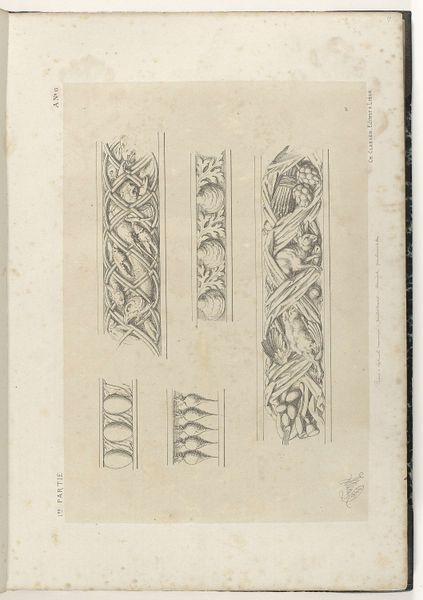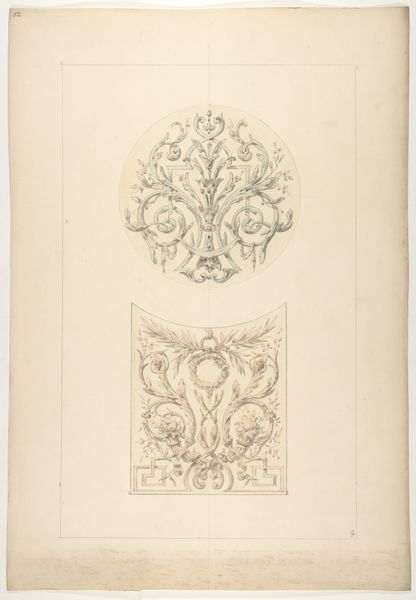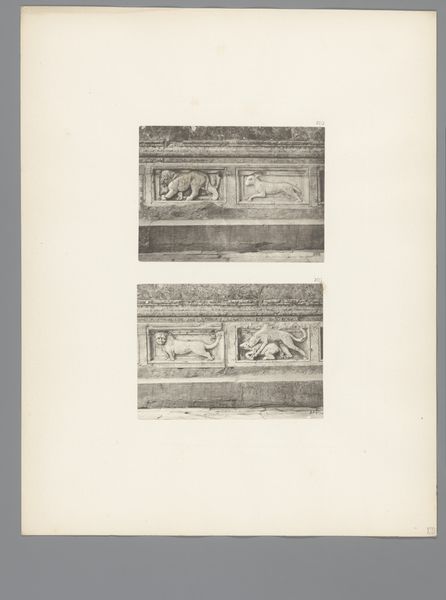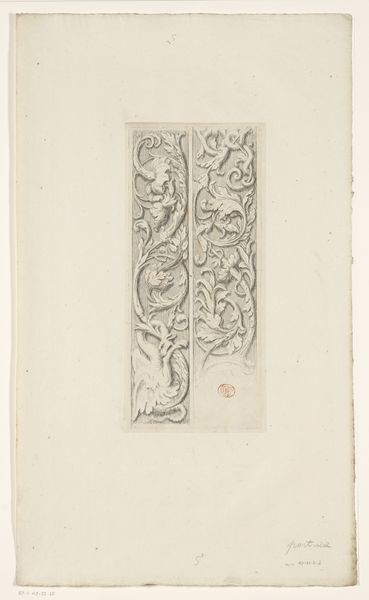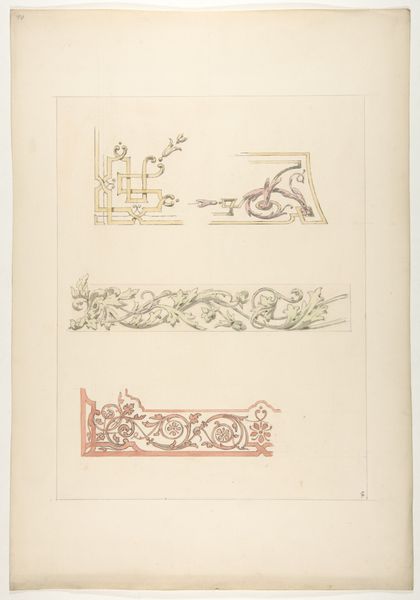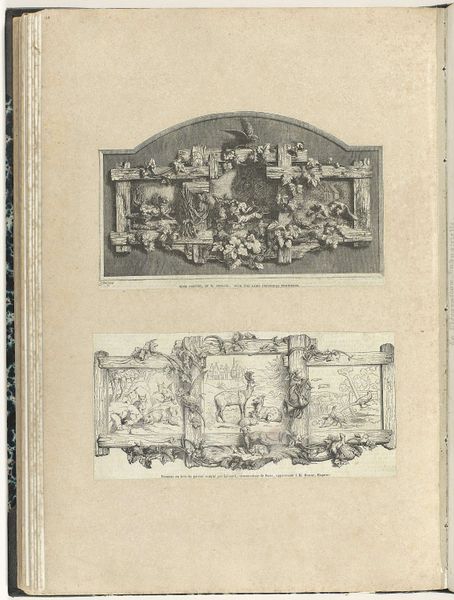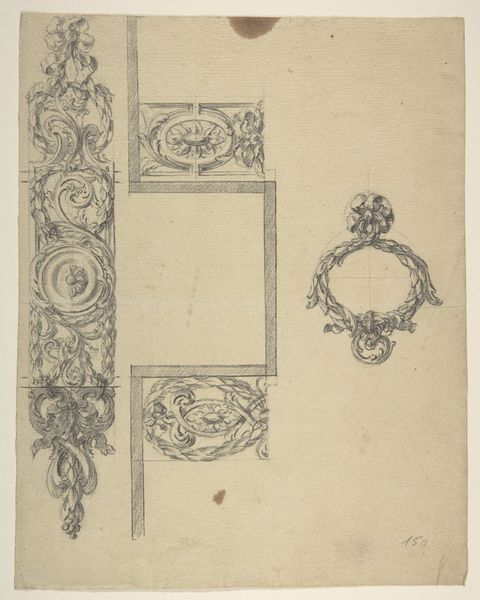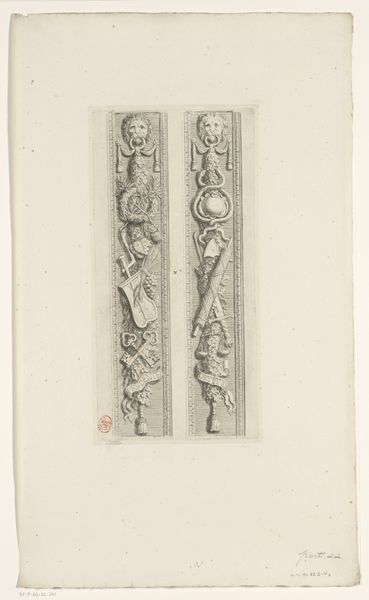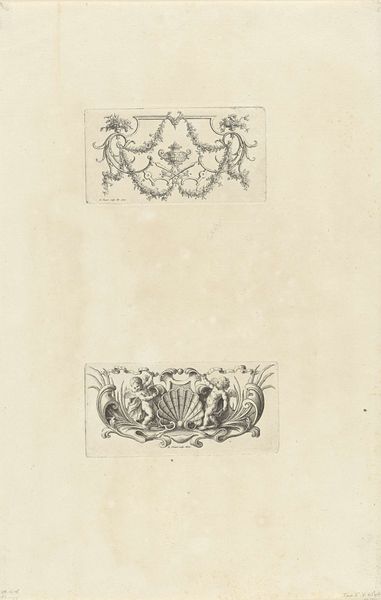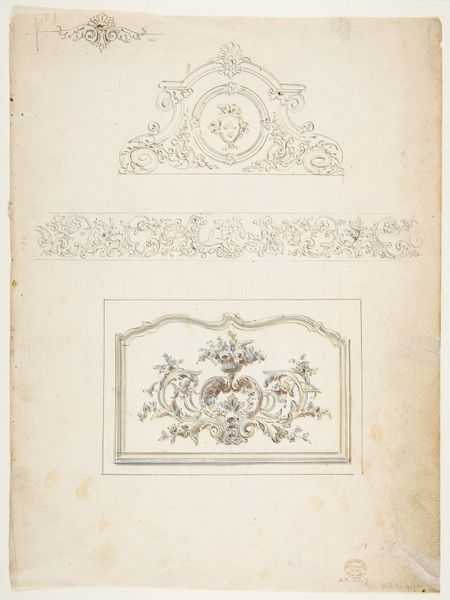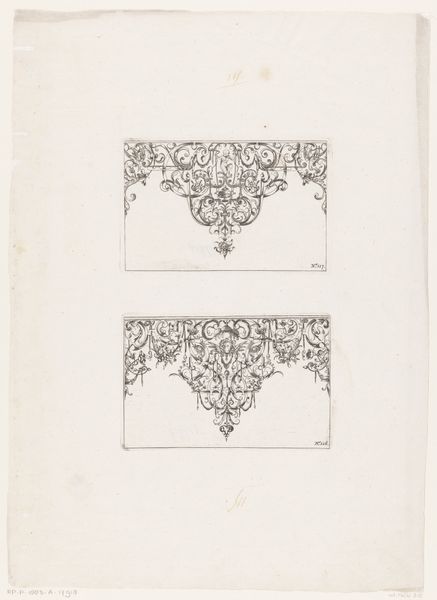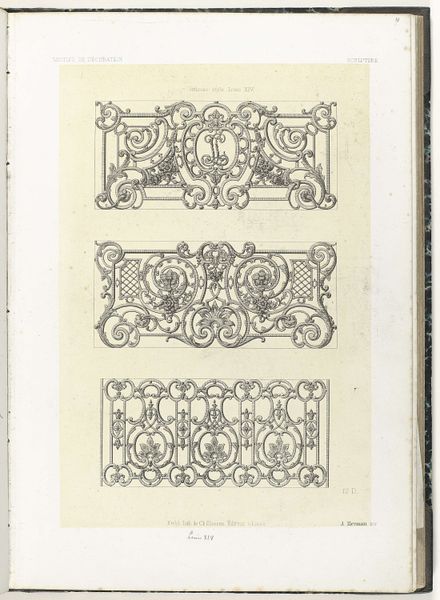
Three ornamental motifs in rococco style 1889
0:00
0:00
Dimensions: Overall: 19 x 13 1/4 in. (48.2 x 33.7 cm)
Copyright: Public Domain
Curator: Jules-Edmond-Charles Lachaise’s "Three Ornamental Motifs in Rococo Style," dating from 1889 and housed here at the Met, offers a glimpse into late 19th-century design sensibilities through drawing, etching, and ink. Editor: You know, seeing this, I immediately feel transported to some grand, yet slightly faded, European parlor. It’s got this whisper of old-world charm, like discovering a secret, elegant blueprint tucked away in an attic. Curator: That whisper speaks volumes, actually. Rococo, even in its revival during the late 19th century, represented a longing for the opulence and aristocracy of pre-revolutionary Europe, a rejection of the stark industrial realities. These aren't just pretty pictures; they're statements, subtle assertions of identity and class amid massive societal shifts. Editor: So, more than just fancy swirls and flowers, it’s kinda like a visual resistance movement, a pushback against the machine age with a quill pen and some gorgeous flourishes? I like that angle; makes you think about the social anxieties hidden in something that looks purely decorative at first glance. Curator: Exactly. And consider the motifs themselves. The crests, floral arrangements – they weren’t arbitrary. Each element was loaded with symbolic meaning, understood within specific social circles. It was a language of privilege, etched into every detail. Editor: It’s funny how the tools shape the message, right? Lachaise chooses etching, this intricate, time-consuming process, as if to say, "Slow down, appreciate the detail, reject the instant gratification" – even though, by 1889, the industrial printing press could crank out these patterns by the mile. There is real intent and deliberate artistic expression at play, something I often overlook in drawings of this kind. Curator: And the limited palette too! These muted tones feel very considered; they avoid gaudiness but emphasize craftsmanship. Think about the rise of naturalism and how even in "decorative" works, there was this impulse to reflect the "authentic," or what was understood as authentic during the period. Editor: Well, suddenly I'm seeing these less as just frilly wallpaper patterns and more as coded messages from a bygone era. Art always does that, doesn't it? The artist has us ask, "Who are we trying to be?". Curator: It's the conversation art creates that brings relevance to these forms and shapes, which extends beyond design.
Comments
No comments
Be the first to comment and join the conversation on the ultimate creative platform.
